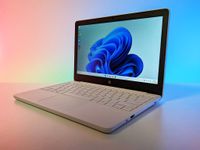The Windows Phone 7 architecture: memory, customization, Live ID
 In a leaked certificate, plainly found by Tweakers.net, some more than data has emerged on the internal design, some limitations and drivers in Windows Telephone vii.
In a leaked certificate, plainly found by Tweakers.net, some more than data has emerged on the internal design, some limitations and drivers in Windows Telephone vii.
Almost the data seems to work in favor of a stable, consequent and consumer friendly mobile Os, but ane cannot deny the big office Microsoft is at present playing in overseeing their new Os (though it'south still much less than Apple tree's grip on the iPhone and iPad, but is that actually saying much?).
Some things worth noting are the following:
- Windows LiveID volition be used to sync data services and enter the Marketplace, much like the electric current setup, and so no real changes there
- Carrier and Bone upgrades will exist handled, approved and distributed only by Microsoft via Over-the-Air (OTA) and/or Zune sync (desktop)
- No changes to the home screen are allowed by OEMs or carriers (non news) but either can customize certain tiles, band tones and wallpapers
- Carriers tin can include their own software but with very strict requirements including being limited to six applications (at a total 60MB storage), no trial-ware (hurray!) and all apps must be approved by Microsoft
- There is support for external storage cards, though it remains to be seen if they will exist initially immune on devices
- Microsoft will supply the 2nd graphics and DirectX 10-based Direct3D 11 runtimes (practiced); OEMs will develop and distribute the drivers for both the 2d and 3D graphics (bad?)
- Support for Bluetooth 2.i merely not 3.0 (yet)
- 480x320 support, though not fully endorsed? May be good for front-qwerty...
Other details related to the memory architecture, which is more or less interesting for programmers and the tech savy. In short, information technology's a 32-chip Os with a dual layer architecture. The kernel and application processes are allowed 2GB of retentiveness each and programs are immune 1GB of virtual retention (upward from a measly 32MB in WM6.x). The file systems are based IMGFS for system files, and TexFAT for user files, with the afterwards beingness "...all-time suited for not-removable media, such every bit NAND and NOR flash retentivity".
Overall the news is a fleck mixed, though we're a fleck happy Microsoft is putting the handcuffs on carriers, especially regarding the addition of their own software/services and blocking the addition of trial-ware. Likewise for ROM updates, which volition now be centralized. Nevertheless, we're a scrap worried almost the 2d/3D driver situation every bit that has been a problem in the past.
What say y'all? Read the original commodity here (Google Translated).
[via SlashGear]

Oh Dear
New study reveals Microsoft's future AR strategy; HoloLens three is expressionless
Business organisation Insider has today published a follow-up report with more details nigh Microsoft's canceled HoloLens 3 augmented reality headset. The partnership with Samsung is said to include a headset with a set of screens inside, powered by a Samsung phone in your pocket.

Keeping it affordable
Review: Surface Laptop SE is the new standard for K-8 Windows PCs
Starting at merely $250, Microsoft's first foray into affordable laptops for the education market is a winner. With a gorgeous blueprint, excellent thermals, and a fantastic typing experience, Microsoft would do correct to sell this directly to consumers as well. Permit's just promise Intel can brand a better CPU.

RAM it up
Here's the best RAM for the AMD Ryzen vii 3800X
We rounded up some excellent module kits for you to utilize with the AMD Ryzen 7 3800X. AMD's Ryzen 3000 series processors need fast RAM in order to perform as designed and these kits will become you well on the way to greatness.
Source: https://www.windowscentral.com/windows-phone-7-architecture-memory-customization-live-id
Posted by: trevinoformserain1949.blogspot.com


0 Response to "The Windows Phone 7 architecture: memory, customization, Live ID"
Post a Comment